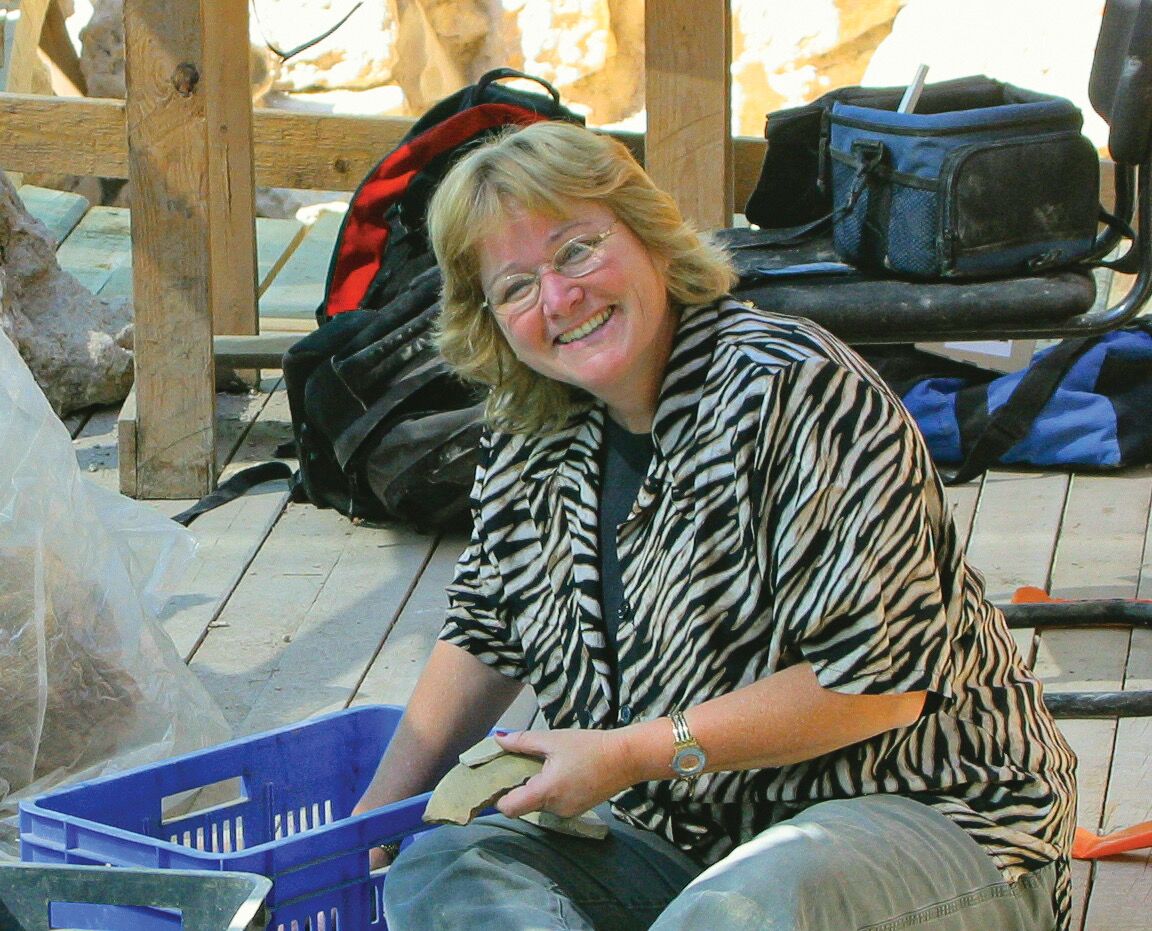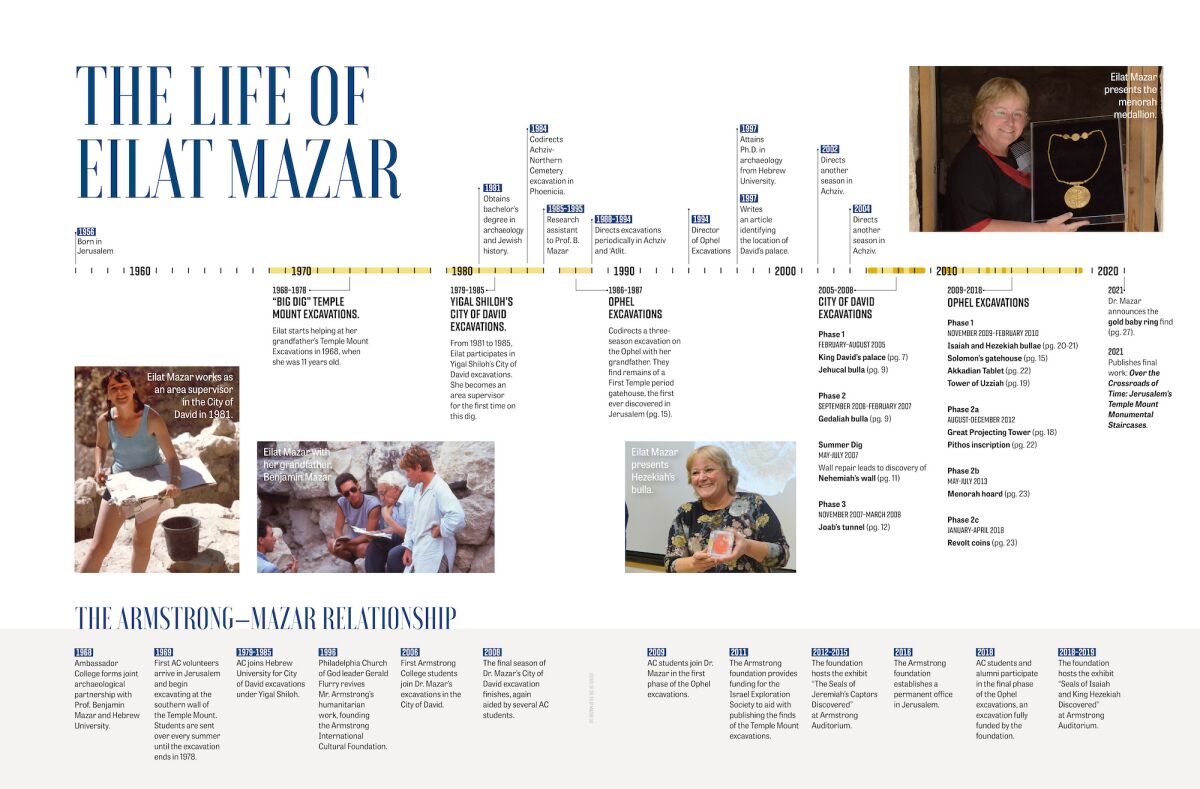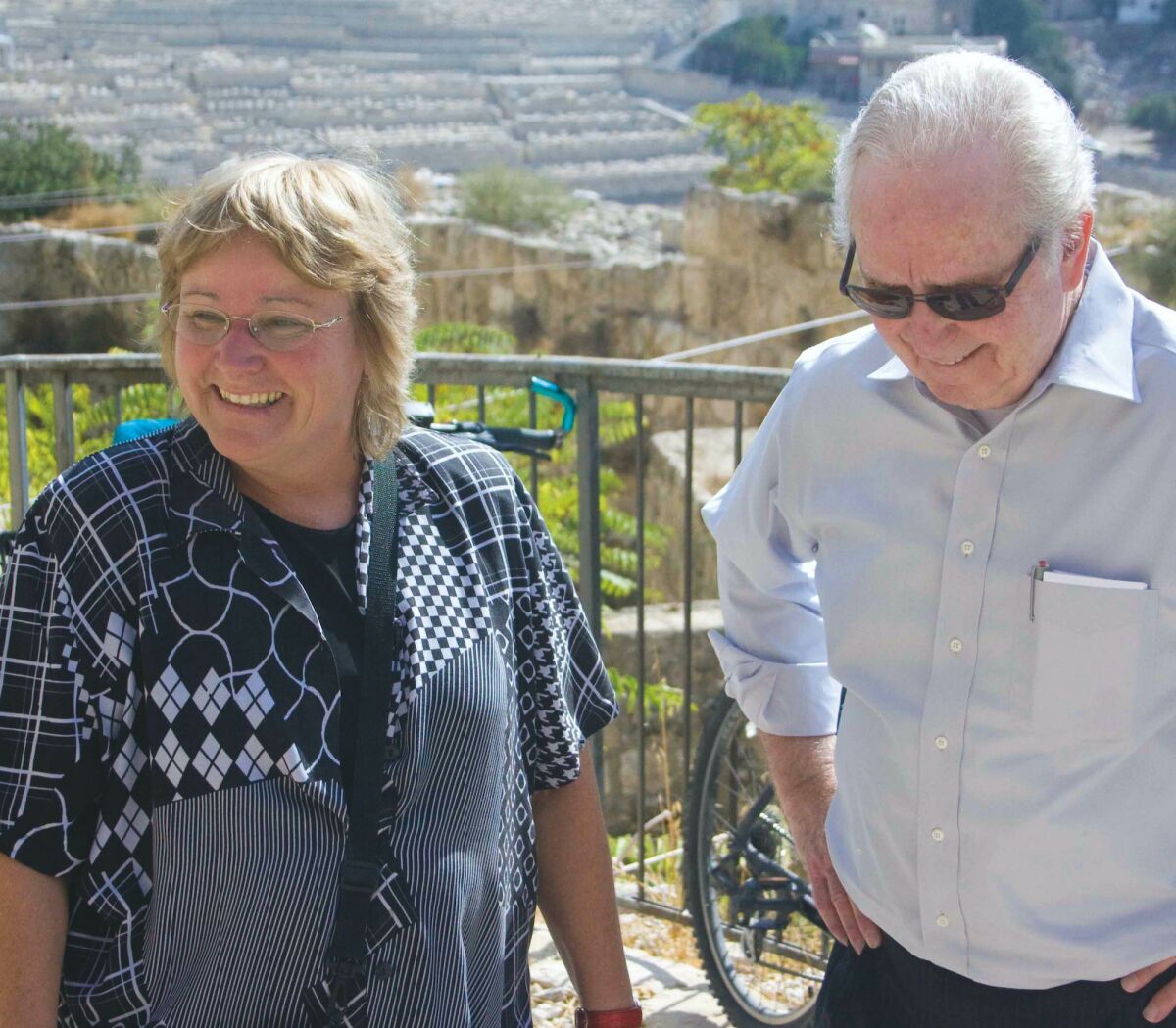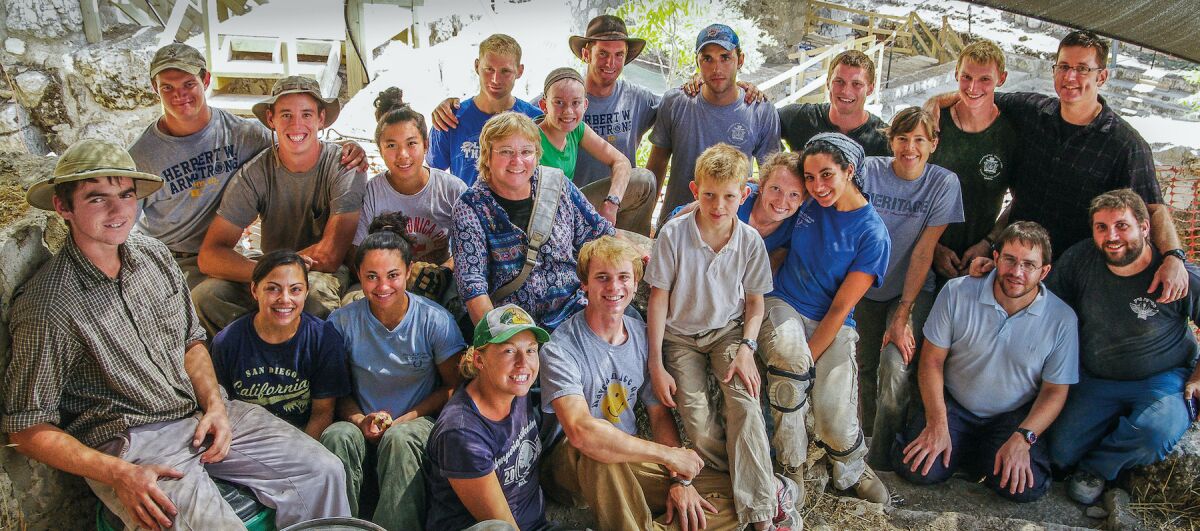When Jerusalem archaeologist Dr. Eilat Mazar died on May 25, 2021 at age 64, the world lost a truly extraordinary person. Eilat was one of the best friends I ever had, and her infectious passion for Jerusalem archaeology was deeply inspiring. Through her archaeology, Dr. Mazar was a tremendous source of education and hope.
In this special issue of Let the Stones Speak, we remember the incredible life and legacy of Dr. Mazar, our friend and partner, and a scientist whose work, I believe, will ultimately cause an earthquake in the world of archaeology.
There are some very talented archaeologists in the world, especially in Jerusalem. But I believe Dr. Mazar will be remembered as one of the greatest archaeologists of all time. Let me explain why.
When you think of some of the Bible’s most famous kings, priests and prophets, what flashes to mind are epic figures like David, Solomon, Hezekiah, Isaiah, Jeremiah and Nehemiah. These men were involved in some of the greatest events and accomplishments recorded in the Bible. Through her archaeology, Dr. Mazar revealed evidence of all these individuals and some of the Bible’s greatest stories—and she shared these sensational discoveries with you and me.
There isn’t enough space in this issue to give a detailed description of each of Dr. Mazar’s discoveries. The science is available, mainly in Dr. Mazar’s various scientific reports (see INFOGRAPHIC: The Publications of Eilat Mazar). If you are seriously interested in Dr. Mazar’s archaeology, I recommend you study these reports. I am also pleased to reveal that we are working on a full-length, high-quality book about Dr. Mazar and her archaeology, so stay tuned for that.
The purpose of this special issue is to highlight the sheer volume of biblical figures and events uncovered by Dr. Mazar and to feature the key to her stunning success.
Of all the brilliant, hardworking archaeologists in the world, not one has come close to uncovering evidence of this many biblical events and personalities. Most archaeologists finish their career without ever discovering even a small percentage of what Dr. Mazar did. How did she do it?
What made Dr. Eilat Mazar such a spectacular success?
A Biblical Scientist
Dr. Mazar was a brilliant scientist who placed tremendous importance in the scientific method. I heard her say on multiple occasions that “we must let the stones speak.” This was one of her mottoes as an archaeologist.
Our college, Herbert W. Armstrong College, has partnered with Dr. Mazar on all of her excavations since 2006. Our students are young and energetic, and they would dig year round if they could. When we weren’t excavating, students would often ask Dr. Mazar when we would be back in the field digging again. Eilat was so patient. She would explain that the work she was doing in the office and laboratory—studying and cataloging the finds, and documenting them in scientific reports—was just as important as digging, if not even more important.
In a 2007 article in Biblical Archaeology Review, the late Hershel Shanks highlighted Dr. Mazar’s credentials. “No one would question her professional competence as an archaeologist,” he wrote.
Dr. Mazar was what we could call a biblical scientist. Unlike the vast majority of scientists today, she had no problem bringing the Bible into her science. In fact, she was eager to do so. I believe this is the reason she was such an outstanding archaeologist.
A lot of scientists and academics today see religion and science as being in competition. Many consider the Bible and science to be mutually exclusive, that you can’t believe in one without disbelieving the other. Most scientists view Bible history as incompatible with their profession. This simply isn’t true, and it’s certainly not what the Bible teaches.
So often, the Bible and science complement one another beautifully. This truth is proved powerfully in the archaeology of Dr. Mazar.
The truth is, it was Dr. Mazar’s fidelity to science that led her to use the Bible! This is how Dr. Mazar explained it to us many years ago. When an archaeologist excavates ancient Greece, she said, he consults the famous Greek authors and texts, such as Herodotus or the History of the Peloponnesian War, by Thucydides. If he were excavating ancient Rome, he would study ancient Roman texts. It’s exactly the same with Jerusalem and Israel. To excavate in the Holy Land and in Jerusalem especially, you must study and consult Bible history.
Who can argue with this reasoning? It is so simple and rational. Yet surprisingly, it was also somewhat revolutionary in the world of modern archaeology and science.
Many scholars and academics would consider it an embarrassment to use the Bible as a reputable historical document. Some even specifically study archaeology in an effort to disprove the biblical narrative. But for Dr. Mazar, the Bible was a crucial tool when digging in Israel and trying to understand Jerusalem archaeology.
To know which approach is more accurate, all we have to do is look at the fruits, which is what we are doing in this issue.
Dr. Mazar learned about the important role the Bible must play in archaeology from her grandfather Prof. Benjamin Mazar. Born and raised in Poland, Benjamin Maisler (as he was formerly named) earned his doctorate in Berlin before moving to Israel around 1927. Professor Mazar quickly became one of the fledgling nation’s most influential scholars and academics. He knew and worked closely with Israel’s founding fathers: figures like David Ben Gurion, Israel’s first prime minister, and Zalman Shazar, Israel’s third president.
Professor Mazar had a Bible with him everywhere he went. In discussions about Israel’s history or a potential new development, he would consult the Bible. When he traveled across Israel, visiting a dig or starting his own, he would open his Bible and study the biblical history of the site.
For Professor Mazar and his granddaughter, the Bible was a companion in their science rather than a competitor. Many scholars today reject the Bible as irrelevant and unimportant. But to Eilat and her grandfather, biblical history was just as important as the spade and field journal.
The fruits of this method, as you will see in this issue, are incontrovertible—and inspiring. When archaeology is informed by the Bible, it becomes one of the most hope-filled and important occupations there is.
A Good Friend
I first met Dr. Mazar in 2006, but our history together goes all the way back to 1967. That was the year I enrolled in Ambassador College—and the year the Six-Day War broke out in Israel. God intervened and gave Israel a miraculous victory that awarded the Jews control of East Jerusalem. The following year, Israel began what was called the “Big Dig,” a massive archaeological excavation at the southern part of the Temple Mount. This dig was directed by Prof. Benjamin Mazar.
The Temple Mount dig attracted the attention of Ambassador College and its founder, Herbert W. Armstrong. Mr. Armstrong met with Professor Mazar, Tourism Minister Moshe Kol and other leaders at the Israeli Knesset at the end of 1968. He formed a partnership with Professor Mazar and Hebrew University of Jerusalem to supply half the funding for the excavations and hundreds of enthusiastic Ambassador College student workers until the conclusion of the dig in 1976. I remember fellow Ambassador students being excited to travel to Israel for that project. Professor Mazar and Mr. Armstrong developed a deep friendship that lasted until Mr. Armstrong’s death in 1986.
While I was at college in Pasadena learning how to excavate the Bible under Herbert Armstrong, Eilat, my future friend, was spending her time on the “Big Dig,” being taught how to conduct archaeological excavations by her grandfather. Even as a girl, Eilat was fascinated by archaeology. She was also well acquainted and deeply impressed with Mr. Armstrong and the Ambassador College students.

Our connection with Eilat deepened in 2006 following her discovery of King David’s palace in the City of David. Between 2006 and her last excavation in 2018, we supplied Dr. Mazar with more than 50 laborers and supervisors over seven excavations. For over 15 years, our employees and students assisted Dr. Mazar with myriad endeavors: excavating; cataloging and photographing artifacts; researching, writing and editing reports; producing artwork; and publishing and publicizing her work, as well as that of her grandfather.
I visited Eilat in Jerusalem many times and have some fond memories of our meetings on the portico at the ymca in Jerusalem. One of my favorite memories was the meeting in which Dr. Mazar pulled her chair closer and then removed a handkerchief from her pocket. Leaning in, Eilat unfolded the handkerchief to reveal a tiny clay seal. Speaking in a whisper, but with great emotion and excitement, she read the seal’s inscription: “Belonging to Hezekiah, [son of] Ahaz, King of Judah.” I was so proud and happy. My friend had discovered the only seal impression belonging to a Judean king ever found in controlled scientific excavations!
This is what Dr. Eilat Mazar did over and over again: She used the Bible and impeccable archaeological practices to bring to life some of the Bible’s greatest personalities and historical events!
Today, thanks to Dr. Mazar extending the legacy of her grandfather, people visiting the City of David can walk within the same walls that King David did. Thanks to Dr. Mazar, we can touch the walls of King Solomon’s palace and examine the signature of King Hezekiah!

In 2007, our workers were able to assist Dr. Mazar in excavating a tower where they found Persian-period pottery and artifacts. Dr. Mazar identified the tower as having been built during the time described in the biblical book of Nehemiah. The next year she and a handful of our workers returned to the City of David, where she discovered the Gedaliah bulla. This clay seal impression was originally owned by one of the princes who persecuted the Prophet Jeremiah (Jeremiah 38). We later had the honor of featuring this bulla and the bulla of Jehucal, an associate of Gedaliah, at an exhibit in Armstrong Auditorium on our home campus, visited by thousands of people.
Between 2009 and 2018, Dr. Mazar conducted four seasons of excavation on the Ophel, locating a royal complex built by King Solomon, a proto-aeolic capital, the first Bes figure found in Jerusalem, many scarabs and seal impressions, coins minted during a first-century c.e. Jewish revolt, a plaster-lined cave with shafts and tunnels, and the bullae of King Hezekiah and Isaiah the prophet.
For years, archaeologists used the lack of physical evidence from David’s time and Nehemiah’s day to justify their lack of faith in the Bible. But as you will see in this issue, Dr. Mazar discovered more than a dozen artifacts directly related to the First Temple period. These discoveries alone should put those doubts to rest—if the critics and scholars would only accept the truth.
Exalting Dr. Mazar’s Work
In our final conversations together, Dr. Mazar shared some of her concerns about the state of biblical archaeology in Israel. She was bothered that too few were willing to seriously bring the Bible into their science and to highlight the crucial connection between Jerusalem archaeology and the Bible.

“You really need to have vision to do a dig in Jerusalem. You need to see the big picture of how things fit in the biblical picture,” she told us. Eilat was troubled that some of Israel’s archaeologists and leaders lacked vision because they were unwilling to use the Bible.
However, she also said that “many of the everyday people still hold it firmly in mind.”
I have thought a great deal about this statement. Dr. Mazar’s remark is very similar to one made by the Prophet Isaiah nearly 2,700 years ago. Isaiah 40:9 says, “O thou that tellest good tidings to Zion, Get thee up into the high mountain; O thou that tellest good tidings to Jerusalem, Lift up thy voice with strength; Lift it up, be not afraid; Say unto the cities of Judah: ‘Behold your God!’”
I’m not sure if Dr. Mazar was familiar with this verse; if she was, she never mentioned it to me. But I believe Isaiah 40:9 summarizes Dr. Mazar’s life and work. In a way, this verse even encapsulates the best parts of her personality.
Dr. Mazar spent most of her career working in the City of David, on the Ophel and in her grandfather’s office at Hebrew University—all three of which are situated on a “high mountain.” From these “high mountains,” Dr. Mazar made some dramatic discoveries, then wrote articles and scientific reports—which were routinely reported on in the international media—that declared “good tidings to Jerusalem.”
For 40 years, Dr. Mazar lifted up her voice with strength! She was not afraid to talk about the Bible, or to happily admit when the Bible intersected with her archaeology. Dr. Mazar had many critics and faced a lot of opposition, especially from other archaeologists (mainly the biblical minimalists). But she never let the antagonism bully her into silence. When it came to her archaeology and the Bible, she courageously lifted up her voice!
And what is the essential message bound up in the discoveries of King David’s palace, King Solomon’s royal complex, the seals of King Hezekiah and Isaiah the prophet, the seals of Gedaliah and Jehucal, and Nehemiah’s wall? The message broadcast to Judah by these sensational discoveries is, “Behold your God!”

Whether she knew it or not, Dr. Eilat Mazar declared, “Behold your God!” to the people of Israel.
The more I think about Dr. Mazar and her archaeology, and her courage, work ethic and love for Jerusalem, the more inspired I am by it.
When Eilat died in May 2021, some wondered if it might slow down our work in Jerusalem. To the contrary, I am more inspired than ever to follow Dr. Mazar’s example and deliver Isaiah’s “Behold your God!” message.
With the world’s greatest biblical archaeologist gone, there is now a massive vacuum. It has never been more important for someone to teach about the symbiotic relationship between archaeology and the Bible, to show how crucial the Bible is to understanding Israel’s past.
It is my goal to exalt the mantle of Dr. Eilat Mazar in Jerusalem, and I passionately want to help continue her work.
With Dr. Mazar’s support and guidance over the past 15 years, The Armstrong Institute of Biblical Archaeology and Herbert W. Armstrong College have undertaken some wonderful and important ventures in Jerusalem. We have participated in seven separate excavations on the Ophel and in the City of David. We have curated two top-quality archaeological exhibits in America. We have worked with Eilat in the office, processing finds and documenting digs. And through this magazine (and website), we spotlight the crucial role the Bible plays in archaeology.
The way I see it, although Dr. Mazar is no longer with us, we are beginning a new chapter. Personally, I am more motivated than ever to uphold and build upon my friend Eilat Mazar’s legacy. Even now, we are working with Hebrew University and Dr. Mazar’s family to help finish some of Eilat’s projects. We are grateful to Hebrew University and the City of David for their support over the years, and we look forward to collaborating with these great institutions in the future. We are also exploring some exciting and important new ventures.
Whenever I think about our work in Israel, Dr. Mazar’s statement rings in my mind: “Many of the everyday people still hold it [the Bible] firmly in mind.” These are the people we aim to reach with Dr. Mazar’s archaeology message. We are working to exploit every possible tool to do that. The “everyday people” are a tremendous audience!
The archaeology taking place in Jerusalem—and across Israel—can be and should be teeming with vision! We want to emulate Dr. Mazar in this way, and surely there are archaeologists out there who feel the same. If you are one of them, we would love to hear from you. Dr. Mazar did all she could to exercise vision in her work. We hope we can continue to reach the everyday people of Israel with that vision and simply “let the stones speak.”
Through her work in the City of David and on the Ophel, the name Eilat Mazar will forever be attached to Jerusalem’s greatest personalities, including its greatest king. I believe that, together with her grandfather, Eilat Mazar conducted the most important archaeology ever undertaken in Jerusalem, the city God has chosen. We will forever cherish the 15 years we had working with Dr. Mazar, and we will sorely miss her profound passion for Jerusalem archaeology.
In the coming years, we will endeavor to preserve Dr. Mazar’s archaeological legacy and keep it alive by working with the same passion, urgency and love.
